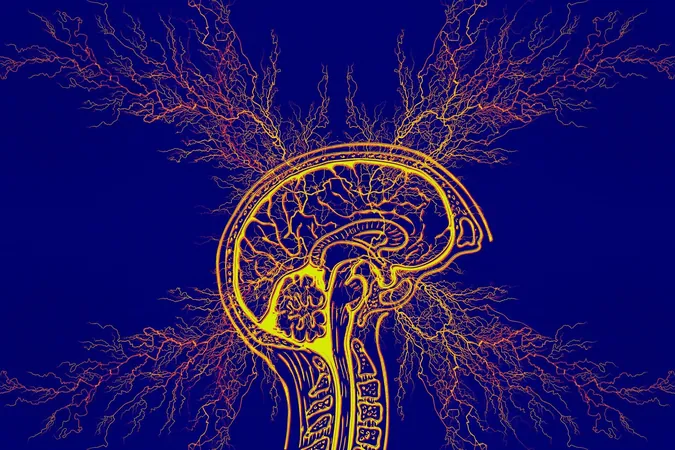
Unraveling the Cosmic Mystery: Where Are the Missing Baryons?
2025-09-04
Author: Mei
Breakthrough at UAH: Solving a Cosmic Puzzle
In a groundbreaking discovery, researchers at The University of Alabama in Huntsville (UAH) have tackled one of the most perplexing questions in cosmology: the missing baryon problem. Recently published in the Monthly Notices of the Royal Astronomical Society, their study reveals the whereabouts of these elusive particles, long thought to be lost since the dawn of the universe.
The Quest for Missing Baryons
Led by Dr. Massimiliano 'Max' Bonamente, along with Dr. David Spence, the research team utilized X-ray radiation emitted by quasars—the universe's most brilliant beacons—to uncover the missing baryons hiding in the warm-hot intergalactic medium (WHIM). This strange and complex state of matter has baffled scientists for years, but it's where much of the baryonic matter has now been found.
"After over a decade of meticulous research, we can confidently close the case on the first of three major cosmological mysteries: the whereabouts of the missing baryons," Bonamente proclaimed, emphasizing the revolutionary nature of their discovery.
Understanding Baryons and Their Cosmic Role
Baryons, primarily protons and neutrons, form the bulk of visible matter in our universe. They are integral to the cosmic web, which consists of vast filaments of dark matter and gas linking galaxies across the cosmos. These filaments play a crucial role, as they draw gas toward them through gravitational forces, thereby heating the gas before it melds into the WHIM.
Unlocking the Universe's Secrets with X-Rays
The researchers dove deep into X-ray data collected from the European Space Agency's XMM-Newton and NASA's Chandra Observatory. By analyzing X-ray absorption lines from 51 quasars, they could detect exceedingly faint signals of highly ionized oxygen atoms—an indicator of the high-temperature gas conditions within the WHIM.
Bonamente explains, "For nearly two decades, studies relied on a handful of sources, creating bias in findings. Our expanded approach, using a larger sample, allows for more reliable estimates and significant insights into these missing baryons."
A Detailed Characterization of Cosmic Baryons
The findings indicate that the missing baryons are associated with hot gas in the WHIM, further corroborated by previous numerical simulations. As Bonamente notes, this is particularly unique since the relevant absorption lines can only be detected in X-rays, underscoring the limitations of traditional observational methods.
Future Directions: The Road Ahead in Cosmology
Despite this monumental breakthrough, numerous questions about the WHIM and the distribution of baryons remain. Researchers aim to discern the exact temperature of these particles, their locations—whether they cluster around galaxies or lie within intergalactic spaces—and their composition.
Bonamente asserts, "Understanding these details will significantly refine our measurements and broaden our comprehension of the universe's fabric." He argues that while discussions on dark matter and dark energy dominate headlines, it’s crucial to address these foundational issues first.
Acknowledgments and Collaborations
This significant achievement was made possible thanks to collaborations with esteemed scientists, including Drs. Jussi Ahoranta, Kimmo Tuominen, Natasha Wijers, and Jelle de Plaa. Bonamente expresses his gratitude, recognizing the collective effort that brought this research to fruition.
As the mystery of the missing baryons begins to unfold, this landmark study paves the way for a deeper understanding of the cosmos, ensuring the universe continues to reveal its secrets.





 Brasil (PT)
Brasil (PT)
 Canada (EN)
Canada (EN)
 Chile (ES)
Chile (ES)
 Česko (CS)
Česko (CS)
 대한민국 (KO)
대한민국 (KO)
 España (ES)
España (ES)
 France (FR)
France (FR)
 Hong Kong (EN)
Hong Kong (EN)
 Italia (IT)
Italia (IT)
 日本 (JA)
日本 (JA)
 Magyarország (HU)
Magyarország (HU)
 Norge (NO)
Norge (NO)
 Polska (PL)
Polska (PL)
 Schweiz (DE)
Schweiz (DE)
 Singapore (EN)
Singapore (EN)
 Sverige (SV)
Sverige (SV)
 Suomi (FI)
Suomi (FI)
 Türkiye (TR)
Türkiye (TR)
 الإمارات العربية المتحدة (AR)
الإمارات العربية المتحدة (AR)